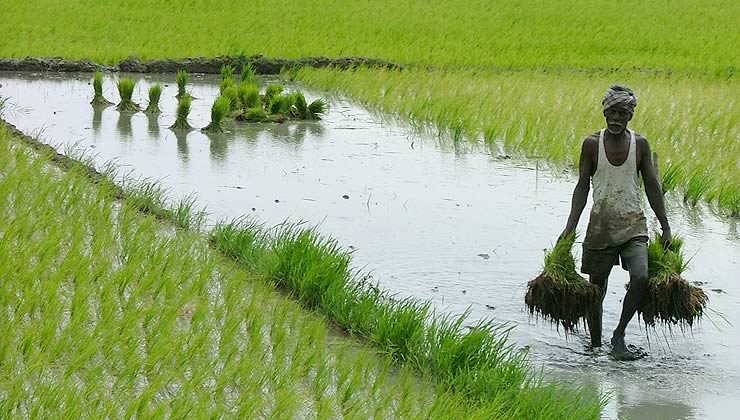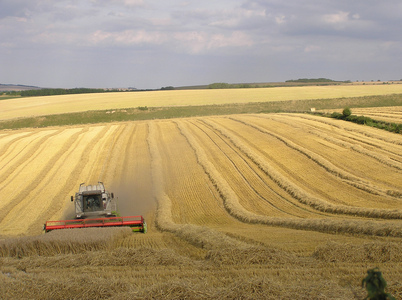Recognizing the Effect of Commercial Farming vs Subsistence Farming on Neighborhood Economies
Examining the Technical Innovations Transforming Precision Farming Today
As the farming industry grapples with the obstacles of feeding an expanding population and making certain sustainability, technical innovations are improving the landscape of accuracy farming. The combination of drones for airborne data collection, the deployment of IoT gadgets for real-time surveillance, and the application of AI-driven analytics are not just improving effectiveness however likewise changing decision-making procedures. These cutting-edge technologies assure improved productivity and decreased ecological effect. The complete influence of these technologies on typical farming techniques and their long-term sustainability remains a topic ripe for exploration. What does this technical evolution absolutely mean for the future of agriculture?
Drones in Agriculture

Drones help with accurate monitoring of big farming stretches, determining locations requiring attention, such as bug problems or vitamins and mineral shortages. This targeted technique enables for the maximized application of fertilizers, pesticides, and water, lowering waste and ecological effect. Additionally, drones considerably lower the time and labor traditionally needed for area inspections, increasing performance and reducing operational prices.
Beyond information collection, drones are critical in accuracy planting and plant spraying, making certain uniform distribution and lessening ground disturbance. The combination of drones into farming exhibits a shift in the direction of data-driven farming practices, where technology not just enhances traditional methods but additionally introduces innovative services for future challenges. As the agricultural sector faces stress from environment modification and population growth, drones offer an appealing opportunity for lasting surge and source preservation.
Satellite Images Breakthroughs
While drones have actually dramatically enhanced precision farming with aerial data collection, satellite images proceeds to play a crucial role in expanding the extent and scale of agricultural tracking. Satellite modern technology uses vast coverage, enabling farmers to gain access to critical insights over extensive areas, which is not viable with drone modern technology alone. This is particularly useful for large ranches that call for thorough, constant information.
Advancements in satellite imagery have actually brought around significant renovations in resolution and regularity of information capture. This prompt information is vital for making educated, real-time choices to optimize crop returns and source use.
In addition, the combination of hyperspectral and multispectral images has actually improved the data top quality, making it possible for the exact recognition of plant types, development phases, and tension variables. With artificial intelligence algorithms, farmers can translate satellite data better, projecting crop performance and potential problems with unmatched accuracy. These advancements are essential in boosting lasting farming practices globally.
IoT in Farming
The arrival of the Web of Points (IoT) in farming stands for a paradigm shift in agricultural monitoring techniques, offering visit site unequaled connection and data-driven understandings. As IoT devices multiply across farmland, they supply real-time monitoring and control over various agricultural procedures. These wise tools, which include dirt sensing units, climate stations, and livestock monitoring systems, gather and transmit information to main platforms, enabling farmers to make enlightened decisions and optimize resource use.
IoT innovation facilitates precision farming by enhancing the accuracy of data gathered from the field. Soil wetness sensors can spot variations in wetness levels, permitting for accurate irrigation scheduling, which conserves water and advertises much healthier plant development. Climate sensors give critical information on temperature level and humidity, assisting in bug and condition monitoring via prompt treatments.
Furthermore, IoT-enabled machinery, such as independent tractors and drones, further enhance operations by automating labor-intensive jobs and decreasing human mistake. These innovations not just enhance efficiency however likewise add to sustainability by minimizing inputs like water, plant foods, and pesticides. As IoT proceeds to develop, its integration right into farming techniques will likely grow, driving efficiency and sustainability in the farming field.
AI-Driven Analytics
Building upon the robust information collection capacities of IoT, expert system (AI) arises as a powerful device in changing raw information right into actionable understandings for precision farming. AI-driven analytics leverages artificial intelligence algorithms to examine substantial datasets accumulated from sensing units, drones, and satellites. This allows farmers to make informed choices concerning plant management, soil health, and source appropriation. By determining patterns and anticipating site web end results, AI empowers farmers to optimize their methods, causing raised return and minimized waste.

Additionally, AI-driven analytics sustain accuracy farming by supplying customized referrals for planting routines and watering monitoring. These insights help enhance water usage, straightening with sustainability goals. By delivering real-time insights and calculated support, AI-driven analytics not only enhance functional performance but additionally add in the direction of lasting agricultural techniques, safeguarding food supply chains for the future.
Robotics and Automation
In the realm of accuracy farming, robotics and automation are changing farming techniques by using unprecedented effectiveness and precision - commercial farming vs subsistence farming. These innovations are significantly being integrated into various farming procedures, from growing and harvesting to surveillance and maintenance. Automated systems, such as robotic harvesters and self-governing tractors, permit the optimization of labor-intensive jobs, reducing human mistake and labor costs. These machines are furnished with gps and sensing units innovation, enabling them to operate with high accuracy and adjust to varying field problems.
Moreover, robotic systems boost crop monitoring and administration. Drones geared up with imaging modern technology can survey large locations quickly, supplying real-time information on crop wellness and soil conditions.
The assimilation of robotics and automation in accuracy farming additionally attends to sustainability concerns (commercial farming vs subsistence farming). By enhancing inputs and making best use of outputs, these technologies aid minimize environmental influence. As a result, robotics and automation not just change farming performance however additionally add significantly to sustainable farming techniques.
Verdict
Technological innovations are fundamentally improving precision farming by integrating advanced tools like drones, satellite imagery, IoT tools, click here to find out more AI-driven analytics, and robotics. Robotics even more simplify procedures, leading to set you back decreases and boosted efficiency, ultimately transforming typical farming methodologies.
Revolutionizing the farming landscape, drones have arised as a critical tool in accuracy farming.IoT technology facilitates precision farming by boosting the accuracy of information accumulated from the field.Building upon the robust information collection capacities of IoT, synthetic knowledge (AI) emerges as an effective device in changing raw information right into actionable understandings for precision farming.In the world of accuracy farming, robotics and automation are changing agricultural practices by providing unprecedented effectiveness and precision.Technical innovations are basically reshaping precision farming by incorporating sophisticated tools like drones, satellite images, IoT gadgets, AI-driven analytics, and robotics.